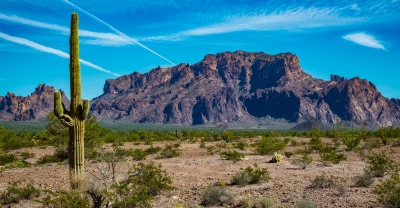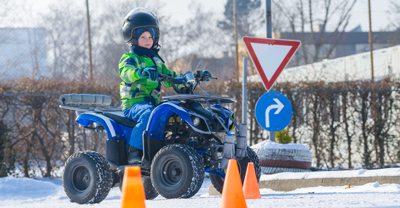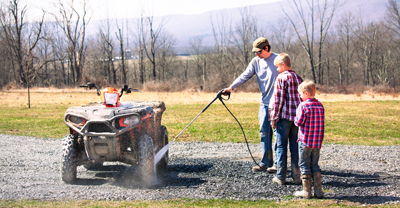Ride nearly 700 miles along the iconic Arizona Peace Trail


0 min. read
If you're looking for your next ultimate off-road adventure, the Arizona Peace Trail (AZPT) features one of the longest continuous off-highway vehicle (OHV) loop routes in the country—nearly 700 miles of desert, mountain, and canyon terrain. Whether you prefer a fast-paced day trip or slow-and-steady multi-day trek, this guide shares route highlights, safety tips, and planning insights to help you craft a ride that fits your style.

Get a free off-road insurance quote from Dairyland today.
The Arizona Peace Trail map
Planning ahead matters—especially with a 700-mile route through remote terrain where cell service is unreliable. Map your fuel stops, overnight options, and access points before you go. Bring paper backups in case your GPS fails.
Check out this AZPT trail resources page for downloadable maps, turn-by-turn GPS files, and real-time route updates. For offline navigation, apps like Avenza Maps can be helpful.
Weather in Bullhead City, Arizona
For most riders, the best time to ride is between October and May, as summer temps can climb well above 110°F. If you’re hoping to catch the desert in bloom, wildflower season typically peaks from mid-February to May. Before you roll out, check the AZPT website—sections of the route may close for organized races and extreme weather.
Here are the average monthly temperatures in Bullhead City:
ATV safety tips for Arizona riders
The Arizona Peace Trail covers a lot of ground—and that means long distances between services, challenging terrain, and extended exposure to extreme heat. Here are some key tips to help keep your ride safe and smooth:
Plan for distance
Even short stretches can feel long in desert heat. Know your fuel range, and map out gas stations, staging areas, and bailout points before you head out.
Stay trail-ready
Check your fluids, tire pressure, brakes, and suspension before every ride. Bring basic tools in case something goes wrong miles from a main road.
Wear protective gear
Arizona law requires helmets for riders under 18, but it’s smart for everyone to wear safety gear including a DOT-approved helmet, eye protection, gloves, long sleeves, pants, and over-the-ankle boots.
Pack the right extras
Load up on water, snacks, spare belts, a tire plug kit, and a compact air compressor. A satellite GPS or emergency beacon can be a smart backup in no-signal zones.
Watch the heat
Temps can easily top 100°F. Ride early when possible, wear breathable layers, and hydrate constantly.
Stick to marked trails
Respect signage and private land. Going off-route can damage the terrain and risk future access for other riders.
Communicate and signal
Use hand signals, flags, and headlights to stay seen—especially in hilly or low-visibility areas. Always ride with a buddy if you're covering remote ground.

Get a free ATV insurance quote from Dairyland today.
Exploring the Arizona Peace Trail counties
Each leg of the AZPT offers a new kind of thrill—whether you’re riding through historic mining sites, chasing riverside views, or climbing into high-altitude mountain terrain.
Yuma County—History and high desert views
Yuma County covers a lot of ground—literally. It’s bigger than the state of Connecticut and packed with desert terrain, backcountry access, and historic sites. Riders passing through can find quick detours or staging areas near:
La Paz County—Desert terrain, off-road access, and staging spots
With its open desert and river access, La Paz County serves as a common starting point for riders hitting nearby AZPT segments. The Parker Strip offers a break from the dust if you’re looking to cool off, but the real draw for most riders is the surrounding network of trails, old mines, and ghost towns. Popular stops include:
Mohave County—Rugged riding and wide-open space
Mohave County is big, dry, and built for long rides. While much of it is open desert, you’ll also find remote stretches of shoreline and parts of the longest remaining section of Route 66. If you’re staging in the area or passing through, here are a few spots riders often detour through:
ATV insurance that fits how you ride
Riding off-road comes with risk—insurance can help you stay protected whether you're on the trail or hauling your ATV home. Dairyland®, a brand of the Sentry Insurance Group, offers flexible off-road coverage options. If you want extra protection on your adventures, we can help—call us at 866-287-9640 to explore your options.

Get a free ATV insurance quote today.
Resource Center
The general information in this blog is for informational or entertainment purposes only. View our blog disclaimer.

















